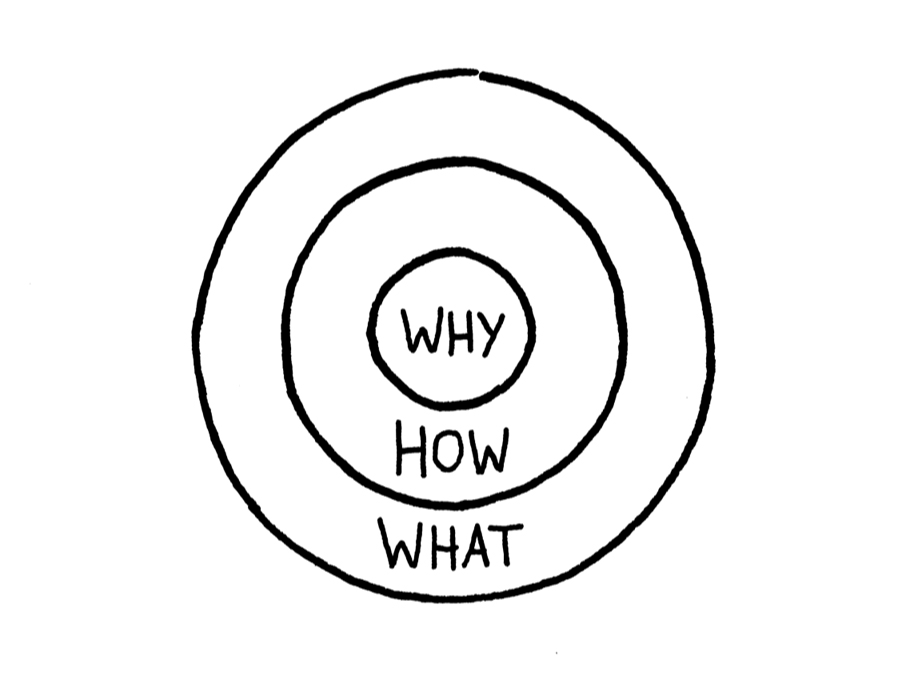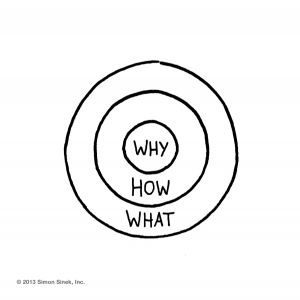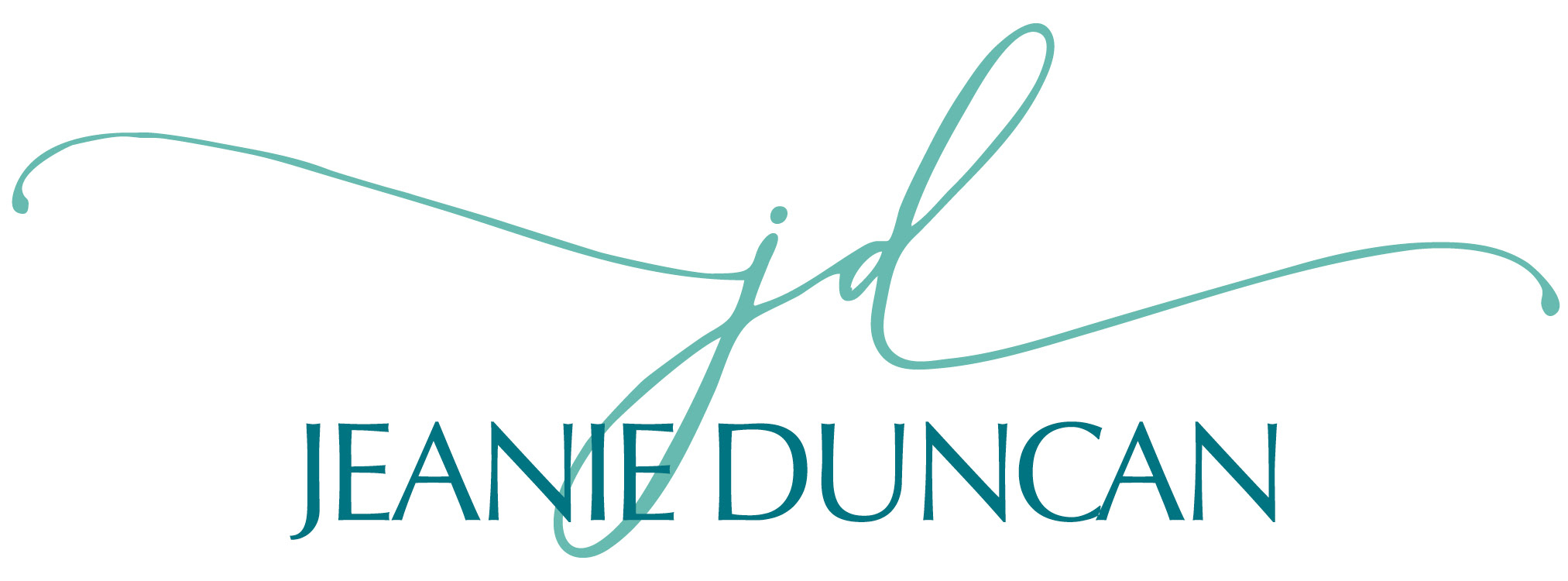
May 8, 2016 | Intention

I had the privilege this week of facilitating a program for leaders in eastern NC working to improve the overall health and wellness in their communities. These folks are so inspiring. The challenges they face are deep and complex and remind me of the importance of ensuring that our leaders are equipped with skills and resources to do their impactful work.
One of the exercises we completed together was around managing your energy, based on a Harvard Business Review article by the same title. The premise is to manage your energy, not your time. Our lives are so full and demanding, with work, family, and community obligations. Self care – if we think of it at all, often gets minimal if any priority at all. It can stretch us to our breaking point.
My favorite take aways from the article are:
- Work smarter, not harder. Resist the seductive allure of putting in more hours to get ahead. This can be a short term strategy on occasion but becomes unhealthy if sustained over time.
- Time is a finite resource. Energy is a different story. Energy comes from four main wellsprings within us: the body, emotions, mind, and spirit. In each, energy can be expanded and renewed by establishing and practicing specific rituals.
- Organizations need to shift their emphasis from getting more out of people to investing more in them, so they are motivated – and able – to bring more of themselves to work every day.
- Recognize the costs of your energy depleting behaviors and take personal responsibility for changing them. All it takes is beginning to implement simple practices one step at a time.
My group of participants came up with a few best practices in each area. The list was so good, I wanted to share it with you. I hope you find some good ideas for yourself and add more of your own!
Spiritual:
- Be in nature
- Pray
- Play music
- Keep things in perspective
- Let your light shine
- Express gratitude…often
- Enjoy the moment(s)
- Laugh (especially at yourself)
- Stay away from negative people.
- Follow your passion
- Journal
- Forgive and move on
- Avoid toxic situations
Emotional:
- Play music
- Journal
- Practice yoga
- Meditate
- Exercise
- Call friends, family, confidants
- Eat ice cream
- Drink vino…especially with a good friend
- Discern which battles are worth fighting
- Take a long, relaxing drive
- Walk, run
- Listen to inspirational words, messages
- Practice deep breathing
- Use essential oils
- Cry
- Hold a baby / pet
- Watch TV that inspires and relaxes you (Oprah, Undercover Boss, etc)
Mental:
- Do relaxation exercises
- Close your eyes and imagine your favorite place (take a brief mental vacation)
- At work, close your door and relax for 15-20 mins
- Take a mental health day
- Listen to your favorite music
- Stop the cycle – interrupt the process
- Retail therapy
- Pedicure – spa day
- Breathe
- Do something for someone else
- Spend time w/ people who cheer you
- Read
- Meditate
- Practice yoga
Physical:
- Work out regularly
- Get plenty of sleep
- Take on a project that excites you
- Eat well
- Connect with a hobby
- Get outside
- Spend time with family
- Enjoy an adult beverage…especially with a friend
- Drink H2O
- Limit sugar intake
- Socialize
- Garden
- Train for something, like a triathlon
- Get active! Run, bike, sail, surf, wake board
- Walk daily
- Yoga
- Cooking
- “Break the fast” – start your day with a healthy meal to fuel you
- Read for enjoyment
- Spend time with pets
 About Jeanie Duncan: Jeanie is President of Raven Consulting Group, a business she founded that focuses on organizational change and leadership development in the nonprofit sector. She is a senior consultant for Raffa, a national firm working with nonprofit clients to lead efforts in sustainability and succession planning, executive transition and search. Additionally, Jeanie serves as adjunct faculty for the Center for Creative Leadership, a top-ranked, global provider of executive leadership education.
About Jeanie Duncan: Jeanie is President of Raven Consulting Group, a business she founded that focuses on organizational change and leadership development in the nonprofit sector. She is a senior consultant for Raffa, a national firm working with nonprofit clients to lead efforts in sustainability and succession planning, executive transition and search. Additionally, Jeanie serves as adjunct faculty for the Center for Creative Leadership, a top-ranked, global provider of executive leadership education.

Mar 21, 2015 | Conflict Management, Leadership
 As a sailor, when I see a storm building on the horizon, I intentionally alter my path to circumvent the system – tacking to port or starboard, or identifying a cove or marina to head into for safety…anything to escape the danger that lies ahead.
As a sailor, when I see a storm building on the horizon, I intentionally alter my path to circumvent the system – tacking to port or starboard, or identifying a cove or marina to head into for safety…anything to escape the danger that lies ahead.
In the business setting, our human tendency is to do the same – avoid the storm, the conflict, that we see brewing. We are a conflict-adverse culture and society. Often, our last (or near last) resort is moving directly into the issue, tension, and challenge to attend to what must be addressed.
So, why is this? Why do we avoid addressing and resolving conflict? Why is it so difficult? Afterall, it’s often identified as one of the most important competencies required of top leaders to succeed. Beyond the fact that conflict is flat out uncomfortable, I believe our aversion is due to a few key things:
- Many of us learn early on in our formative years to avoid making waves, to listen to others, and be polite. Personally, as a female growing up in the southeastern United States, I often would say one thing and mean another – too afraid to share my true thoughts and risk offending someone. My parents, as well as others who shaped and influenced me early on, taught me that questioning and being direct was considered rude, bossy, and aggressive, so I simply didn’t practice it.
- When starting out in our careers, we’re young, new in a position, trying to gain an understanding of the office culture, and learning the political landscape. We’re encouraged (whether expressed or not) to be tactful and diplomatic – “keep your head down and get the job done” – or else become known as the difficult employee…sometimes risking losing our job altogether.
- When we advance and move from a role as an individual contributor to a role of leading others, the relationships necessary for working together often spawn conflict. Our tendency can be to revert back to what we know well – our individual strengths, whether technical, financial, sales, etc. – and avoid the sticky, messy group dynamics of gaining alignment and commitment to work toward a common goal. We can also avoid acting as a result of preservation (of relationships, tradition, etc.) and territory, digging our heels in to protect our own viewpoints, values, and beliefs and refuse to move.
Conflict is difficult for a number of reasons – those mentioned above and others you can surmise. But difficult as it may be, addressing and resolving conflict is critically important to individual and organization success. It begins with defining what conflict is in the first place and understanding it as something to be dealt with instead of avoided.
At its core, conflict is disharmony and discord between people, interests, or ideas. It’s also natural to the human experience. Where there are people, there will be conflict. Afterall, people are emotional beings. We have deeply held beliefs, values, and experiences that have shaped who we are. We’re bound to bring this into how we express ourselves, make decisions, and communicate with one another. And when we do, we will differ, disagree, and sometimes clash. The key to making it work and being effective, is to learn to have open, honest debate and dialogue around issues of importance to the team. It can only happen if vulnerability-based trust exists.
Teams without trust often argue destructively because they are laced with politics, pride, and competition, rather than humble pursuit of truth. When trust exists, team members say everything that needs to be said and it leaves less to talk about behind closed doors. Conflict is always at least a little uncomfortable. And it’s inevitable that people will feel under some degree of personal attack. This is still no reason to avoid conflict.
As Patrick Lencioni states in his book, The Five Dysfunctions of a Team, “If team members are not making one another uncomfortable at times, if they’re never pushing one another outside of their emotional comfort zones during discussions, then it is extremely likely that they’re not making the best decisions for the organization.”
The problem around conflict that I most often see in relationships and teams is artificial harmony with no conflict at all, coupled with great fear of moving in that direction. It reminds me of a friend who told me that he and his girlfriend of two years had never had an argument. He shared this as a point of pride; however, I see this as a warning sign. The ability to have healthy, productive conflict is a symbol of maturity and sustainability in a relationship. When a relationship or team shows that it can survive an incident of significant conflict, it builds greater trust and confidence in the relationship.
Let’s examine a few key practices to engaging in and managing team conflict:
- Begin with trust building exercises. A team (or a relationship of any kind) and its members must know and trust one another before it can engage in courageous conversations and move into and through conflict together. (See key tips in my blog post: Team Trust – Critical Yet Rare)
- Identify “rules of engagement” and how you will address conflict together. Establish clear norms, keep these visible and present, and hold everyone accountable for what they’ve agreed upon. It’s important to ensuring a productive exchange of ideas.
- Gain clarity on viewpoints and comfort levels with conflict, because they can differ greatly. On one extreme are the people who are comfortable arguing passionately; on the other are those who are not comfortable expressing the mildest of dissention. Know where your team members fall, why they fall there, and what’s important to them as you work together to address conflict.
- Be clear on role clarity and alignment. Individual team members need to be crystal clear on their own role, how their role supports the team’s work, and how the collective team’s work supports the organization’s mission.
- Create a feedback rich environment in the spirit of understanding one another’s behaviors and the impact of those behaviors on teamwork and effectiveness. Foster a culture that encourages team members to give feedback to one another in a positive, non-judgmental manner, and then members use that feedback to shape and adapt their behaviors to yield the greatest results.
- Leaders must be miners of conflict. It’s important for a leader “not only to light the fuse of good conflict, but also to gently fan the flames,” states Lencioni. “Even when team norms for conflict have been set, most people will shy away from conflict.” Seek out opportunities for unearthing buried conflict and require team members to address the issues. An issue lying dormant is merely simmering beneath the surface and can be on the verge of erupting…or can quietly undermine progress.
Given human nature and the pressures of organizational life, there’s likely to always be conflict wherever people are together. But this conflict can be managed so that it’s a productive encounter that leaves individuals engaged in their work, honored and supported for their ideas and beliefs, and the organization on a path to mission delivery success.
_______
Lencioni, P. (2005). Overcoming the five dysfunctions of a team: a field guide. San Francisco: Jossey-Bass.
Also read these related blog posts:
Perspectives on Conflict with Your Boss
Bridge the Divide of Conflict with Direct Reports
Team Trust – Critical Yet Rare
A Process for Managing Peer Conflict
 About Jeanie Duncan: Jeanie is President of Raven Consulting Group, a business she founded that focuses on organizational change and leadership development in the nonprofit sector. She is a senior consultant for Raffa, a national firm working with nonprofit clients to lead efforts in sustainability and succession planning, executive transition and search. Additionally, Jeanie serves as adjunct faculty for the Center for Creative Leadership, a top-ranked, global provider of executive leadership education.
About Jeanie Duncan: Jeanie is President of Raven Consulting Group, a business she founded that focuses on organizational change and leadership development in the nonprofit sector. She is a senior consultant for Raffa, a national firm working with nonprofit clients to lead efforts in sustainability and succession planning, executive transition and search. Additionally, Jeanie serves as adjunct faculty for the Center for Creative Leadership, a top-ranked, global provider of executive leadership education.

Feb 23, 2015 | Leadership

The foundation of any highly functioning team is trust. While critically important, it can be rare among teams, and we all know it takes time and intentional practice to build. Trust is all about vulnerability – get comfortable being open, honest, and ‘exposed’ to one another around failures, challenges, and areas for development and trust begins to emerge. The process is well worth the effort invested and can be cultivated with sustained intention, purpose, and focus.
In many workplaces, what we find is a group of individuals who have been hired over time and are expected to begin working together without any prior relationships or baseline of trust being formed. They may even call themselves a team, but in reality, they’re individual performers charged with accomplishing a group goal. This is very different from a “team.” And it’s not a formula for success, especially in light of challenges and potential conflict inherent to any project or task.
Try these trust-building exercises to help develop a strong, highly functioning team:
- In his book “Overcoming the Five Dysfunctions of a Team,” Patrick Lencioni shares the Personal Histories Exercise. It works like this: At a staff meeting, go around the room and have each person respond to a question (or questions) that requires them to share something personal and relevant. For example, the author offers this three-part question: 1) Where they grew up, 2) How many kids were in the family, and 3) What was the most difficult or important challenge of their childhood. In responding, the group learns a lot about one another, and in the process, they become more comfortable being open about other things. Empathy develops, and it also helps individuals overcome what Lencioni calls the fundamental attribution error, where we tend to falsely attribute the negative behaviors of others to their character (false conclusion: people do bad things because they’re bad).
- Administer a behavioral assessment with a team – a tool that will provide an objective, reliable means for understanding and describing one another. There are many from which to select – Meyer’s Briggs, DISC, Strengths Deployment Inventory, to name a few – and each can be an effective means to self-identify their ‘type’ and provide a common vocabulary to describe similarities and differences. Such a tool can be completed with a team in as little as a couple of hours or extended to a half- or full-day experience.
- Another proven way for a team to learn to work together to build trust is to attend a high initiative or ropes course. This experience typically takes at least a half-day and is offered to teams by independent training organizations. Hanging at the end of each other’s rope is a great way to increase risk taking and trust levels, using an ultra safe and highly supervised course.
Key to making any of these exercises work is to anticipate initial objections and have proper facilitation. These experiences, when implemented well, can establish a foundation of team trust and set a path for achieving great results together.
_______
Lencioni, P. (2005). Overcoming the five dysfunctions of a team: a field guide. San Francisco: Jossey-Bass.
Also read these related blog posts:
Perspectives on Conflict with Your Boss
Bridge the Divide of Conflict with Direct Reports
Into the Storm: Mastering Team Conflict
A Process for Managing Peer Conflict
 About Jeanie Duncan: Jeanie is President of Raven Consulting Group, a business she founded that focuses on organizational change and leadership development in the nonprofit sector. She is a senior consultant for Raffa, a national firm working with nonprofit clients to lead efforts in sustainability and succession planning, executive transition and search. Additionally, Jeanie serves as adjunct faculty for the Center for Creative Leadership, a top-ranked, global provider of executive leadership education.
About Jeanie Duncan: Jeanie is President of Raven Consulting Group, a business she founded that focuses on organizational change and leadership development in the nonprofit sector. She is a senior consultant for Raffa, a national firm working with nonprofit clients to lead efforts in sustainability and succession planning, executive transition and search. Additionally, Jeanie serves as adjunct faculty for the Center for Creative Leadership, a top-ranked, global provider of executive leadership education.

Feb 10, 2015 | Leadership
I recently completed some forecasting and goal setting for my business. As I went through this process, I pulled from several resources that inspire and motivate me, a favorite of which is Simon Sinek’s “Start With WHY.” He expresses his message through what he calls The Golden Circle:

His premise is that you must begin with your WHY, and from there figure out your HOW and WHAT. When Sinek studied successful leaders, he found a common denominator – they inspire through a clearly and passionately articulated WHY. They hold their WHY front and center – like a North Star – to guide their WHAT and HOW. Everything emerges from the core WHY, or belief. HOWs are the actions they take to realize that belief. And WHATs are the results of those actions.
I’ve known about Sinek’s philosophy for a while, but I find even greater meaning in it now – not only for my own personal and business reflection, but also for my clients.
According to this line of thought, most every person and organization knows WHAT they do. That’s usually pretty clear. Some know HOW they do it. But very few know WHY they do WHAT they do. Or at least they don’t stop to think about it or articulate it frequently and consistently.
By WHY, Sinek doesn’t mean ‘to earn revenue,’ but rather, he’s referring to your purpose, your cause, your belief. Sinek asks, “WHAT makes you get out of bed in the morning? WHY do you care? And WHY should others care?” Think of it as communicating from the inside out.
Think for a moment – We busily go about our day-to-day. We take on roles, assignments, projects, and business…and before long we’ve amassed this huge volume of ‘stuff’ without pausing to think about WHY we’re doing it. Even if we know our WHY, we can fail to consciously use it as our lens or filter for making decisions.
As I went through my own reflection, I see room for getting clearer with my own “WHY” and doing a better job of sharing my story.
A theme for me over my life is that I’m a self-starter and risk taker. I grew up in an entrepreneurial family with my parents owning two businesses. My siblings and I were involved in those businesses where there was no task too great or small; we all pitched in to get it done. And if we didn’t know how to do it, we figured it out. Failures were acknowledged as just one step closer to succeeding.
When I finished college, my first jobs were new positions where I was responsible for creating the role. Later on, I set my vision and sites for what I wanted and set out to achieve it, including starting my own business. Through it all, I didn’t have all the information, the guidelines were ambiguous, and I needed to perform and produce results fast. I quite like this messiness – stepping into the unknown, bringing order to chaos, and charting a course where there isn’t one.
This pattern and energy shapes my WHY – To help people know WHAT they want, find their courage, step forward, and take risks. This is the path to which my life and my work is devoted.
Sinek offers, “People don’t buy WHAT you do. They buy WHY you do it. People don’t buy WHAT you sell. They buy WHAT you believe. And people follow you not because they have to, not because they are paid to, but because they want to.”
This concept comes alive every day in business:
- Strategy Development: For an organization to develop its goals, strategies, and tactics, it must first be crystal clear on its WHY, often presented most succinct in a well-crafted vision and mission. As Sinek offers, “It’s not just WHAT or HOW you do things that matters; what matters more is that your WHAT and HOW is consistent with your WHY.” With a WHY clearly stated in an organization, anyone within the organization can make a decision as clearly and as accurately as the top leader.
- Sustainability Planning: The products and services offered by many organizations are broad and complex. It’s important to critically and regularly examine these lines of business and ask, “WHY do we do this,” looking at both mission impact and financial return to gauge long-term sustainability. Yet, we can get so caught up in the day-to-day, that our WHAT mutates into a complex web without a clear connection to vision and mission, and with limited (or lost) return on investment.
- Succession Planning and Leadership Transitions: Sinek concludes that top executives are successful in great part because they inspire and embody what they believe. When the person who personifies the WHY departs without clearly articulating WHY the company was founded in the first place, they leave no clear cause for their successor to lead. “Successful succession is more than selecting someone with an appropriate skill set – it’s about finding someone who is in lockstep with the original cause around which the business was founded. Great 2nd and 3rd CEOs don’t take the helm to implement their own vision of the future; they pick up the original banner and lead the company into the next generation.”
I encourage you to get to your WHY. It yields greater confidence than ‘I think it’s right.’ It’s more scalable than ‘I feel it’s right.’ When you know your WHY, the highest level of assurance you can offer is, ‘I know it’s right.’
_______
Sinek, S. (2009). Start with why: how great leaders inspire everyone to take action. New York: Penguin Group.
 About Jeanie Duncan: Jeanie is President of Raven Consulting Group, a business she founded that focuses on organizational change and leadership development in the nonprofit sector. She is a senior consultant for Raffa, a national firm working with nonprofit clients to lead efforts in sustainability and succession planning, executive transition and search. Additionally, Jeanie serves as adjunct faculty for the Center for Creative Leadership, a top-ranked, global provider of executive leadership education.
About Jeanie Duncan: Jeanie is President of Raven Consulting Group, a business she founded that focuses on organizational change and leadership development in the nonprofit sector. She is a senior consultant for Raffa, a national firm working with nonprofit clients to lead efforts in sustainability and succession planning, executive transition and search. Additionally, Jeanie serves as adjunct faculty for the Center for Creative Leadership, a top-ranked, global provider of executive leadership education.

Dec 22, 2014 | Intention

January lures me to a place of reflection of the prior year and intention and goal setting for the year ahead. It’s my way of honoring life events, learning from what I’ve experienced, and dreaming of what I most want.
Over time, I’ve developed a some tools that serve me well in this process. Here are a few favorites that I hope you will find of value.
- Take a blank sheet of paper and draw a vertical line down the middle of the page. On the left side at the top, write “Freedom From” (What do I want to STOP doing?). On the right side, write “Freedom Toward” (What do I want to be or START doing?). Then down the far left column, write these words: Career, Family & Friends, Significant other / Romance, Fun & Recreation, Health, Money, Personal Growth, and Physical Environment. Complete each column in terms of ‘freedom from’ and ‘freedom toward’. This exercise will help you create alignment in the direction toward what matters most.
- Another exercise I find valuable is completing Stephen Covey’s Time Management Matrix, which I have sample-populated below from a business perspective. I like to do this including both work and family elements, sometimes in two different grids. I don’t know about you, but much of my day quickly can be filled with the 3rd quadrant – the seemingly urgent, but less important things. At the end of those days, it’s hard to note anything meaningful that I’ve accomplished. Ideally, I use this tool not only at the beginning of a new year, but also at the beginning of each month and week to keep me focused on what matters most.

- Journaling can be another effective outlet to reflect and draw out thoughts about the past year and help focus and imagine the 12 months ahead. Consider the writing prompts below as you complete this exercise.
Reflecting on the prior year:
- What am I celebrating?
- What were the most significant events of the year past?
- What’s going well? …not so well?
- How am I leveraging my strengths?
- What did I learn? (skills, knowledge, insights, etc.)
- What would I have done differently?
- What did I complete or release? What still feels incomplete to me?
- How am I different this year than last?
- For what am I particularly grateful?
Imagining the year ahead:
- What intentions do I have for the coming year?
- What is the commitment I want to make for: my work, my family, my self?
- How do I want to approach things differently?
- How do I want to spend my time?
- What would I do if I knew I couldn’t fail?
- How and with whom do I most want to spend my time?
- How will I honor my core values?
- Imagine that it is 6 months from now, and I’ve acted on my intentions or met my goals. What is like? How does it feel? What resources and support surround me?
A final critical piece to goal setting is to enroll an accountability partner. As you refine your intentions and goals for the year, ask a friend or colleague to help support you and hold you accountable. Set a schedule where s/he will followup and ask you about your progress. They can serve as an important ally in helping you move past barriers as well as celebrate your progress (big and small). Choose someone who will challenge and stretch you and call you out when you’re playing small!
Best wishes to you in this experience and bringing forth your best self in the year ahead!
 About Jeanie Duncan: Jeanie is President of Raven Consulting Group, a business she founded that focuses on organizational change and leadership development in the nonprofit sector. She is a senior consultant for Raffa, a national firm working with nonprofit clients to lead efforts in sustainability and succession planning, executive transition and search. Additionally, Jeanie serves as adjunct faculty for the Center for Creative Leadership, a top-ranked, global provider of executive leadership education.
About Jeanie Duncan: Jeanie is President of Raven Consulting Group, a business she founded that focuses on organizational change and leadership development in the nonprofit sector. She is a senior consultant for Raffa, a national firm working with nonprofit clients to lead efforts in sustainability and succession planning, executive transition and search. Additionally, Jeanie serves as adjunct faculty for the Center for Creative Leadership, a top-ranked, global provider of executive leadership education.


 About Jeanie Duncan: Jeanie is President of Raven Consulting Group, a business she founded that focuses on organizational change and leadership development in the nonprofit sector. She is a senior consultant for Raffa, a national firm working with nonprofit clients to lead efforts in sustainability and succession planning, executive transition and search. Additionally, Jeanie serves as adjunct faculty for the Center for Creative Leadership, a top-ranked, global provider of executive leadership education.
About Jeanie Duncan: Jeanie is President of Raven Consulting Group, a business she founded that focuses on organizational change and leadership development in the nonprofit sector. She is a senior consultant for Raffa, a national firm working with nonprofit clients to lead efforts in sustainability and succession planning, executive transition and search. Additionally, Jeanie serves as adjunct faculty for the Center for Creative Leadership, a top-ranked, global provider of executive leadership education.










